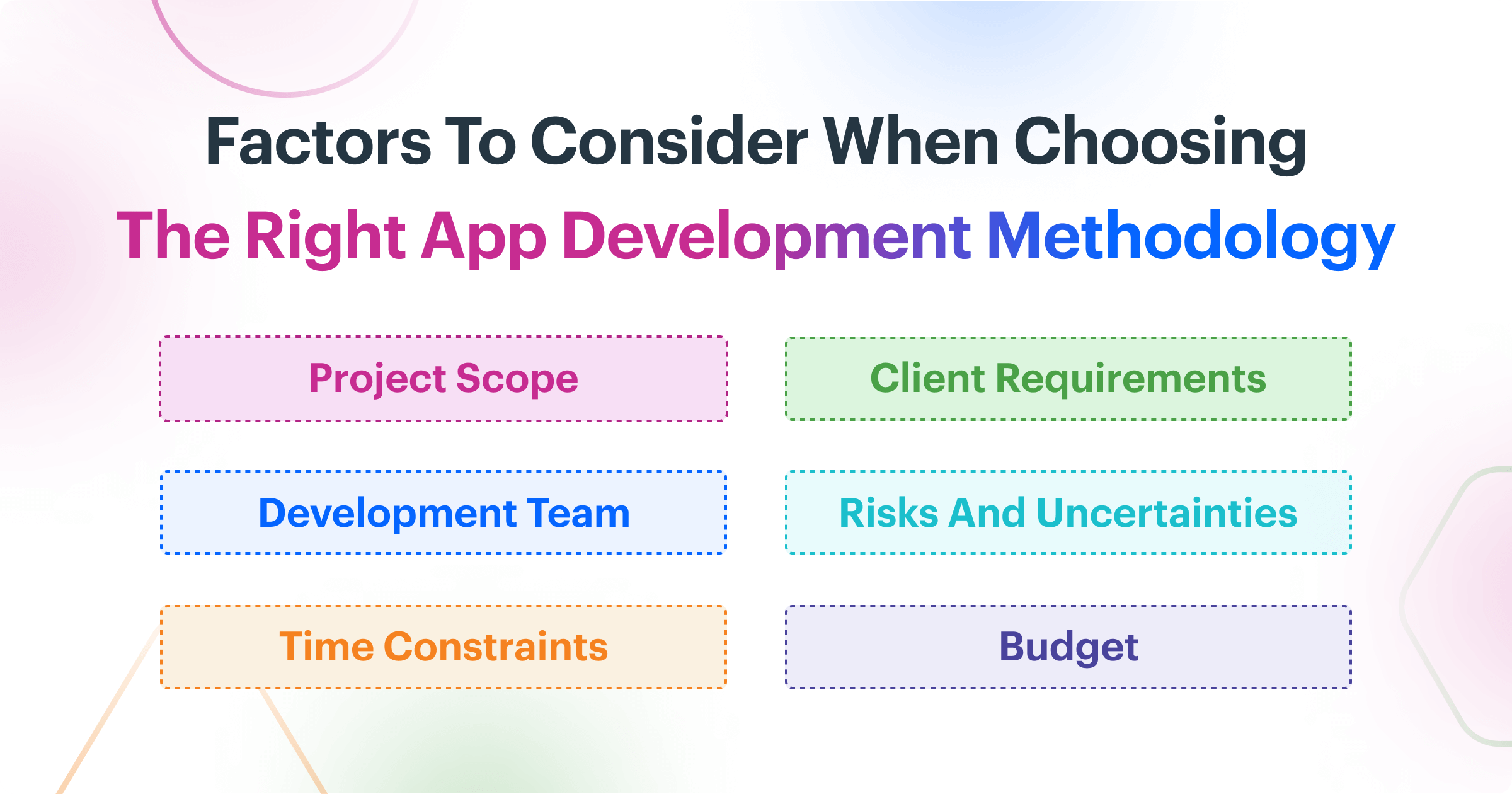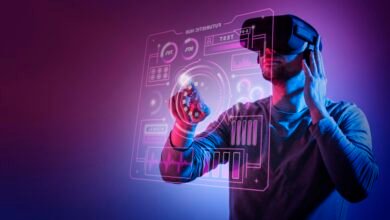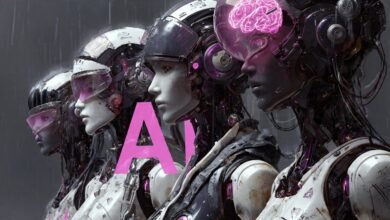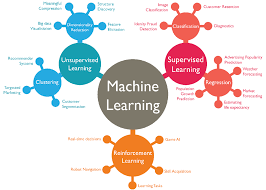How to Choose the Right Machine Learning Framework
Learn how to choose the right machine learning framework for your project. Compare TensorFlow, PyTorch, Keras & more with our expert guide

Selecting the right machine learning framework is one of the most crucial decisions that can significantly impact your project’s success, development timeline, and overall performance. With the rapid evolution of artificial intelligence and machine learning technologies, developers and data scientists face an increasingly complex landscape of frameworks, each offering unique advantages and specialized capabilities.
The machine learning framework you choose will determine everything from your development speed to model deployment efficiency, scalability potential, and long-term maintainability. Whether you’re building a simple classification model or developing complex deep learning applications, the nuances between different frameworks are essential for making an informed decision.
In 2025, the machine learning frameworks ecosystem has matured considerably, with established leaders like TensorFlow and PyTorch continuing to dominate while newer frameworks emerge to address specific use cases. TensorFlow and PyTorch continue to dominate the ML space in 2025, with TensorFlow highly favored for production-ready models, while PyTorch remains popular in research due to its flexibility.
The complexity of modern AI projects demands careful consideration of multiple factors, including your team’s expertise, project requirements, scalability needs, and deployment environment. A framework comparison reveals that different tools excel in different scenarios – what works perfectly for academic research might not be the best choice for enterprise-level production systems.
This comprehensive guide will walk you through the essential criteria for choosing machine learning frameworks, provide detailed comparisons of the top options available in 2025, and help you make a data-driven decision that aligns with your specific project goals. By the end of this article, you’ll have the knowledge and confidence to select the optimal framework for your machine learning journey, ensuring your projects are built on a solid foundation that can grow and adapt with your needs.
Machine Learning Frameworks
What Are Machine Learning Frameworks
A machine learning framework is a comprehensive software library that provides pre-built tools, algorithms, and utilities to streamline the development of machine learning models. These frameworks abstract complex mathematical operations and provide high-level APIs that make it easier for developers to build, train, and deploy AI models without starting from scratch.
Machine Learning Framework serves as the foundation layer between your application logic and the underlying computational resources. They handle essential tasks such as automatic differentiation, tensor operations, model optimization, and distributed computing, allowing developers to focus on solving business problems rather than implementing low-level mathematical functions.
Core Components of Machine Learning Framework
Modern machine learning frameworks typically include several key components:
Data Processing Modules handle data ingestion, preprocessing, and transformation tasks. These modules provide utilities for loading datasets, performing feature engineering, and preparing data for training.
Model Building APIs offer pre-implemented algorithms and neural network architectures. These range from simple linear regression models to complex deep learning architectures like transformers and convolutional neural networks.
Training Engines manage the model training process, including backpropagation, gradient computation, and optimization algorithms. They often support both CPU and GPU acceleration for faster training times.
Deployment Tools facilitate model serving and inference in production environments. These tools help convert trained models into formats suitable for different deployment scenarios, from mobile devices to cloud servers.
Benefits of Using Machine Learning Framework
The primary advantage of using an established Machine Learning Framework is accelerated development time. Instead of implementing algorithms from scratch, developers can leverage battle-tested implementations that have been optimized for performance and stability.
Framework standardization also promotes code reusability and collaboration within teams. When everyone uses the same framework, knowledge sharing becomes more effective, and code maintenance becomes more manageable.
Performance optimization is another crucial benefit. Leading frameworks are continuously optimized for various hardware configurations, including GPUs, TPUs, and distributed computing environments, ensuring your models run efficiently at scale.
Key Factors to Consider When Choosing a Framework

Project Requirements and Use Case Analysis
The first step in selecting a Machine Learning Framework involves thoroughly your project’s specific requirements. Having your use case laid out in detail will guide your choice, as you need to evaluate factors such as the type of application you’ll be building, the expected model output, and the type of data you’ll be working with.
Computer vision projects typically benefit from frameworks with strong image processing capabilities and pre-trained models, while natural language processing tasks might require frameworks with robust text processing utilities and transformer architectures.
The complexity of your models also influences framework choice. Simple machine learning algorithms like linear regression or decision trees can be implemented effectively in lightweight frameworks, while complex deep learning models require frameworks with advanced neural network capabilities.
Team Expertise and Learning Curve
Assessing your team’s technical expertise is crucial for framework selection. Some frameworks prioritize ease of use and have gentle learning curves, while others offer more flexibility but require deeper technical knowledge.
Python-based frameworks like scikit-learn are often preferred by teams with strong Python backgrounds, while frameworks with extensive documentation and community support can help teams overcome knowledge gaps more quickly.
Consider the time available for learning new technologies. If you need to deliver results quickly, choosing a framework that aligns with your team’s existing skills might be more practical than adopting the theoretically “best” option.
Performance and Scalability Requirements
Model performance encompasses both training efficiency and inference speed. Some frameworks excel at training large models quickly, while others are optimized for fast inference in production environments.
Scalability considerations include both horizontal scaling (across multiple machines) and vertical scaling (leveraging more powerful hardware). For large-scale machine learning deployments, TensorFlow is the go-to choice, and if your organization works with massive datasets and requires distributed training, MXNet is another strong option.
Memory efficiency is particularly important when working with large datasets or deploying models on resource-constrained devices. Some frameworks are better optimized for mobile deployment, while others excel in cloud-based environments.
Community Support and Documentation
Strong community support can significantly accelerate your development process. Frameworks with active communities typically offer better documentation, more tutorials, and faster resolution of issues through forums and discussion boards.
The availability of pre-trained models and ready-to-use examples can dramatically reduce development time. Frameworks with extensive model zoos and example repositories provide valuable starting points for common use cases.
Long-term support and regular updates are essential for production systems. Choose frameworks that have committed maintenance schedules and clear versioning policies to ensure your applications remain secure and up-to-date.
Top Machine Learning Frameworks Comparison
TensorFlow: The Production Powerhouse
TensorFlow remains one of the most comprehensive and mature machine learning frameworks available in 2025. Developed by Google, it offers exceptional capabilities for both research and production environments.
TensorFlow’s strengths include robust production deployment tools, extensive documentation, and strong support for distributed training. The framework excels in scenarios requiring high scalability and integration with Google Cloud services.
The TensorFlow ecosystem includes TensorFlow Lite for mobile deployment, TensorFlow Serving for production inference, and TensorFlow Extended (TFX) for end-to-end machine learning pipelines. This comprehensive ecosystem makes it an excellent choice for enterprise applications.
However, TensorFlow can have a steeper learning curve compared to some alternatives, and its static graph approach (though TensorFlow 2.x improved this with eager execution) may feel less intuitive for researchers accustomed to dynamic frameworks.
PyTorch: The Research Favorite
PyTorch has gained tremendous popularity in the research community due to its dynamic computation graphs and intuitive Python-native design. In research settings, PyTorch stands out for its flexibility and ease of customization.
The framework’s dynamic nature allows for easier debugging and experimentation, making it particularly suitable for research projects where model architectures frequently change. PyTorch’s autograd system provides automatic differentiation that feels natural to Python developers.
PyTorch Lightning extends the base framework with additional structure and best practices, making it more suitable for production environments while maintaining the flexibility that researchers love.
The main considerations with PyTorch include historically weaker production deployment tools (though this has improved significantly) and potentially less optimized performance for very large-scale distributed training compared to TensorFlow.
Scikit-learn: The Traditional ML Champion
Scikit-learn remains the gold standard for traditional machine learning algorithms, including classification, regression, clustering, and dimensionality reduction. Its consistent API design and comprehensive documentation make it an excellent choice for projects that don’t require deep learning capabilities.
The framework’s strength lies in its simplicity and reliability. Scikit-learn provides well-tested implementations of classical algorithms with excellent default parameters, making it accessible to beginners while remaining powerful enough for advanced users.
Integration capabilities with other Python libraries like NumPy, pandas, and matplotlib make scikit-learn an excellent choice for data science workflows that require traditional ML approaches. Limitations include a lack of deep learning support and limited scalability for very large datasets, though tools like Dask can help address some scalability concerns.
Keras: The High-Level Interface
Keras has evolved from a standalone framework to become the high-level API for TensorFlow. With its intuitive syntax and modular design, Keras allows students and developers to build deep learning models with minimal code and maximum clarity. The Keras advantage lies in its user-friendly approach to deep learning. The framework abstracts away many complexities while still providing access to low-level functionality when needed.
Model building in Keras follows an intuitive pattern that makes it easy to experiment with different architectures. The framework provides both sequential and functional APIs to accommodate different programming styles. While Keras is now integrated with TensorFlow, its high-level nature might sometimes limit fine-grained control that advanced users require for cutting-edge research.
Other Notable Frameworks
Apache MXNet offers excellent support for multiple programming languages and efficient distributed training capabilities. It’s particularly strong for organizations that need multi-language support.
XGBoost and LightGBM are specialized frameworks focusing on gradient boosting algorithms, offering exceptional performance for tabular data and structured prediction tasks.
JAX is gaining attention for its functional programming approach and excellent performance optimization capabilities, particularly for research applications requiring custom gradients and transformations.
Machine Learning Framework Selection Guidelines
Matching Frameworks to Project Types
Computer vision projects typically benefit from frameworks with strong GPU support and pre-trained models. TensorFlow and PyTorch both excel in this domain, with extensive libraries for image processing and computer vision tasks.
Natural language processing applications often require frameworks with good support for sequence models and transformers. Both TensorFlow and PyTorch offer excellent NLP libraries, with Hugging Face Transformers being compatible with both.
Traditional Machine Learning Framework projects involving tabular data and classical algorithms are best served by scikit-learn, possibly combined with XGBoost or LightGBM for gradient boosting tasks.
Decision Matrix Framework
Create a Machine Learning Framework evaluation matrix that weighs different factors according to your project’s priorities. Consider factors like ease of use, performance requirements, deployment needs, and team expertise.
Scoring methodology should reflect your specific constraints. A research project might prioritize flexibility and experimentation features, while a production system might emphasize stability and deployment tools.
Trade-off analysis helps identify the most suitable framework by clearly documenting what you’re willing to sacrifice in one area to gain advantages in another.
Migration Considerations
Framework migration can be a significant undertaking, so choosing the right framework initially is crucial. However, migration paths between frameworks can provide flexibility for future needs.
Model portability standards like ONNX (Open Neural Network Exchange) can help reduce vendor lock-in by enabling model conversion between different frameworks.
Gradual adoption strategies allow teams to experiment with new frameworks on smaller projects while maintaining existing systems, reducing the risk of major disruptions.
Implementation Best Practices

Getting Started with Your Chosen Framework
Framework setup should follow official installation guides and use virtual environments to avoid dependency conflicts. Container-based approaches using Docker can provide consistent environments across development and production.
Initial project structure should follow framework-specific best practices and community conventions. This includes proper organization of code, data, and configuration files.
Version control strategies should account for both code and model versioning. Tools like MLflow or Weights & Biases can help track experiments and model versions effectively.
Development Workflow Optimization
Experimentation workflows should leverage framework-specific tools for hyperparameter tuning and experiment tracking. Many frameworks provide built-in experiment management capabilities.
Code organization principles include separating data processing, model definition, training, and evaluation code into modular components that can be independently tested and maintained.
Testing strategies should include unit tests for custom components and integration tests for end-to-end workflows. Framework-specific testing utilities can help validate model behavior.
Performance Optimization Techniques
Hardware utilization optimization includes proper GPU usage, memory management, and leveraging specialized accelerators when available. Different frameworks have different optimization strategies.
Model optimization techniques include quantization, pruning, and distillation. Framework-specific tools can help implement these optimizations without significant performance degradation.
Profiling and monitoring help identify bottlenecks and optimize performance. Most frameworks provide built-in profiling tools that can identify computational hotspots.
Future Considerations
Emerging Trends in Machine Learning Framework
Edge computing requirements are driving the development of more efficient frameworks optimized for mobile and IoT devices. Frameworks are increasingly focusing on model compression and efficient inference.
AutoML capabilities are being integrated into many frameworks, reducing the expertise required to build effective models. This trend is making machine learning more accessible to non-experts.
Federated learning support is becoming more common as privacy concerns grow. Machine learning frameworks are adding capabilities for training models across distributed datasets without centralizing data.
Framework Evolution
Version compatibility strategies help ensure long-term maintainability. Following semantic versioning and maintaining backward compatibility when possible reduces maintenance overhead.
Community contributions continue to drive framework development. Active participation in framework communities can help influence development direction and get early access to new features.
Ecosystem integration is becoming increasingly important as machine learning workflows become more complex. A machine learning framework that integrates well with existing tools and infrastructure provides better long-term value.
More Read: Best AI Learning Apps for Students and Professionals
Conclusion
Choosing the right machine learning framework is a critical decision that requires careful consideration of multiple factors, including project requirements, team expertise, performance needs, and long-term maintenance considerations. The machine learning framework landscape in 2025 offers mature options like TensorFlow for production scalability, PyTorch for research flexibility, scikit-learn for traditional ML tasks, and Keras for accessible deep learning development.
Success depends on aligning your framework choice with specific use cases, evaluating trade-offs between ease of use and advanced capabilities, and considering future scalability and migration needs. By following the guidelines and decision matrix approach outlined in this comprehensive guide, you can make an informed choice that will serve as a solid foundation for your Machine Learning Framework projects and adapt to evolving requirements over time.











